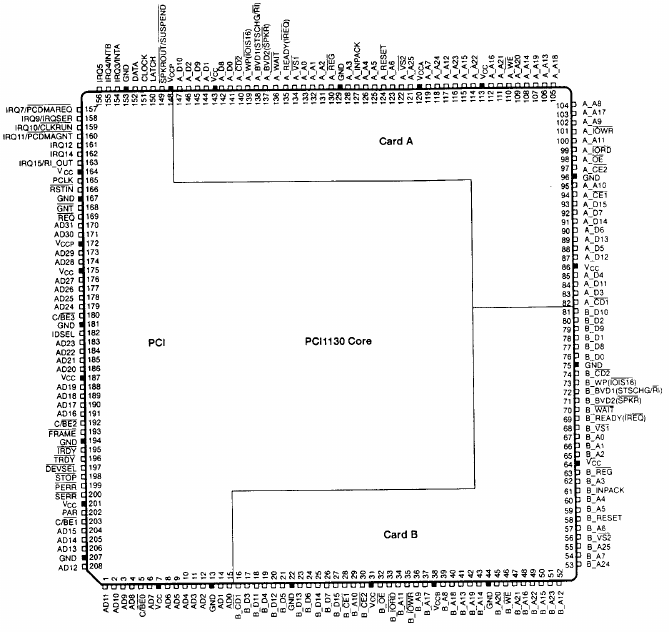
4-16 Theory of Operation
4.3.7 TI1130 PCMCIA Controller
The TI PCI1130 is a high-performance PCI-to-PC Card controller that supports two independent PC
Card sockets compliant with the 1995 PC Card standard. The PCI1130 provides a set of features
that make it ideal for bridging between PCI and PC Cards in both notebook and desktop computers.
The 1995 PC Card standard retains the 16-bit PC Card specification defined in PCMCIA release 2.1
and defines the new 32-bit PC Card, called CardBUs, capable of full 32-bit data transfers at 33 MHz.
The PCI1130 supports any combination of 16-bit and CardBus PC Cards in its two sockets, powered
at 3.3V or 5V as required.
The PCI1130 is compliant with the PCI local bus specification revision 2.1 and its PCI interface can
act as either a PCI master device or a PCI slave device. The PCI bus mastering is initiated during
16-bit PC Card DMA transfers or CardBus PC Card bus mastering cycles.
All card signals are internally buffered to allow hot insertion and removal without external buffering.
The PCI1130 internal data path logic allows the host to access 8-, 16-, and 32-bit cards using full
32-bit PCI cycles for maximum performance. Independent 32-bit write buffers allw fast-posted
writes to improve system-bus utilization.
An advanced CMOS process is used to achieve low system power consumption while operating at
PCI clock rates up to 33 MHz. Several low power modes allow the host power-management system
to further reduce power consumption.
The pin diagrams are shown in Figure 4-9 first for PCI-TO-PC CARD (16-BIT); then Figure 4-10 for
PCI-TO-CARDBUS (32-BIT).
Figure 4-9 TI1130 Chip PCI-to-PC card (16-bit) Pinouts


















